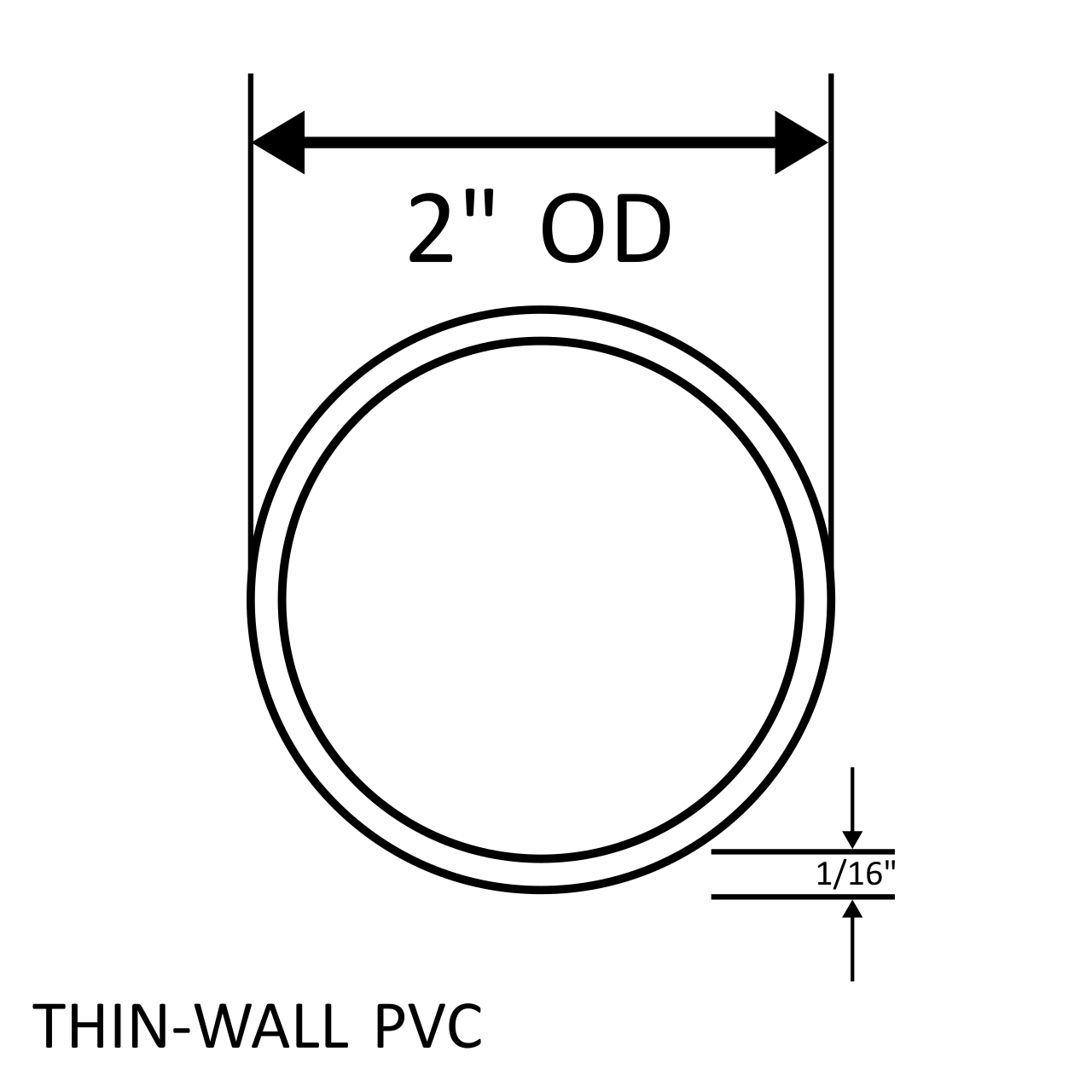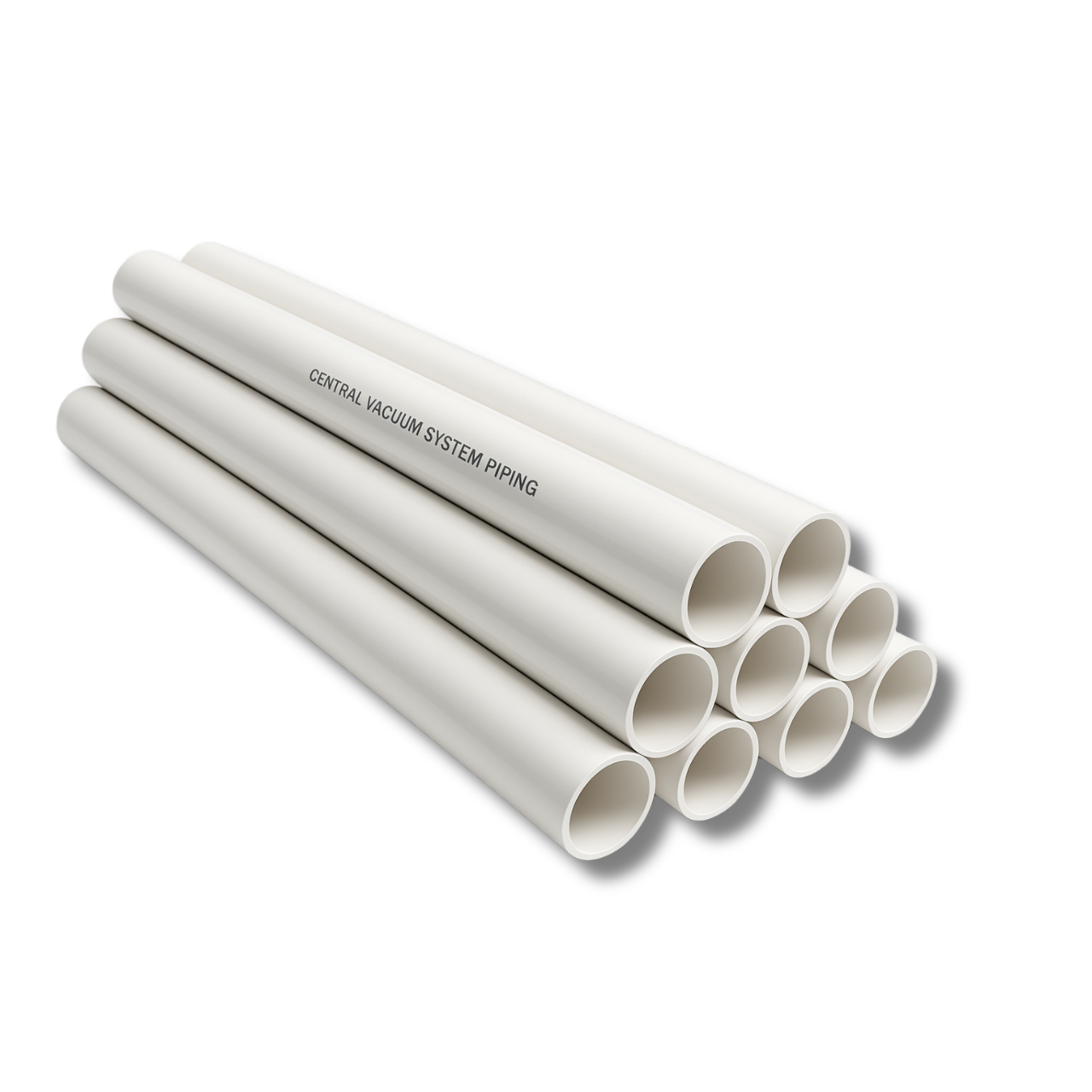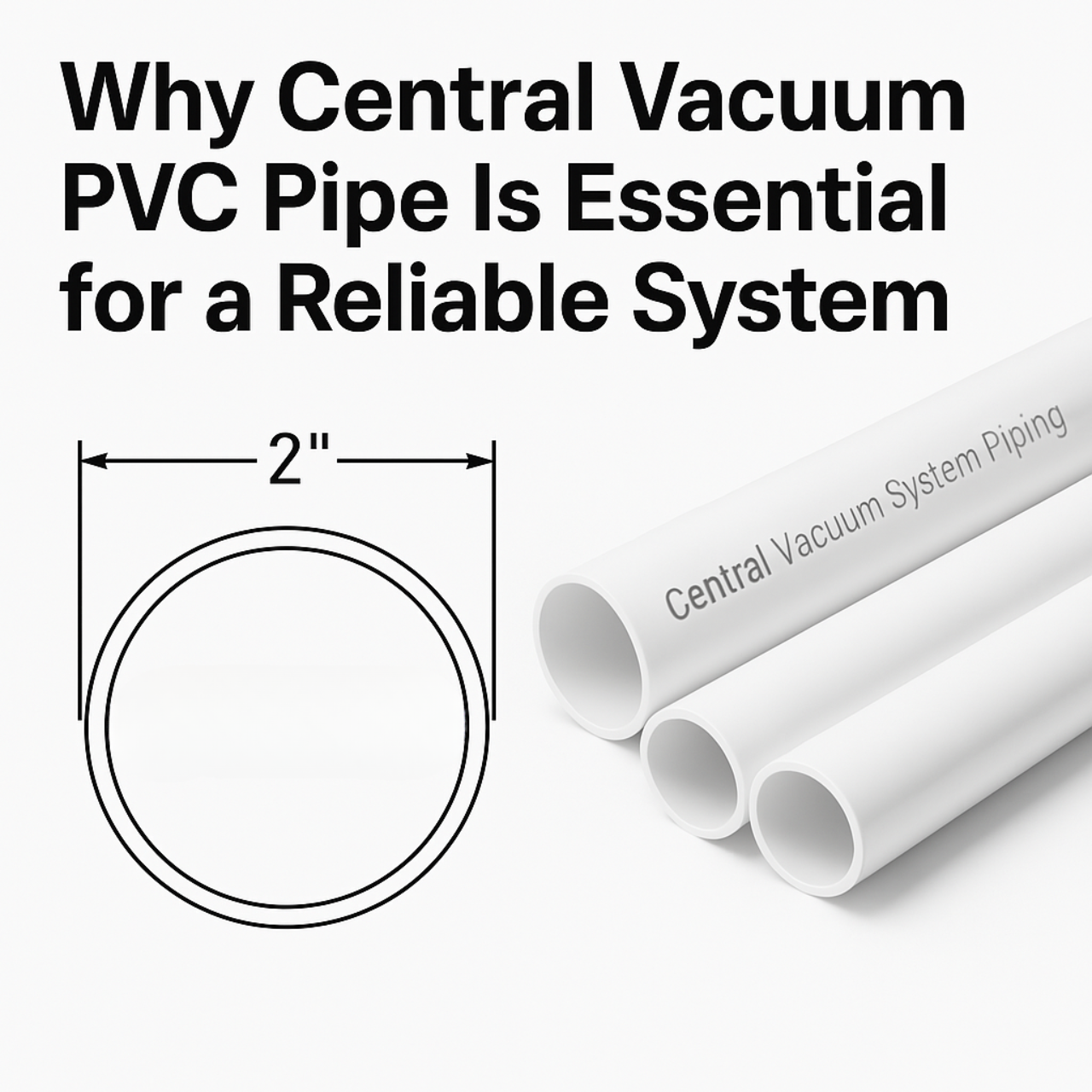Why Central Vacuum PVC Pipe Is Essential for a Reliable System
Apr 8th 2025
When installing or upgrading your central vacuum system, choosing the right piping is crucial for performance and longevity. One of the most commonly used—and most important—components is the 2-inch central vacuum PVC pipe. Unlike standard plumbing pipe, this piping is specifically designed for vacuum systems, ensuring airtight performance and maximum suction power.
What Is Central Vacuum PVC Pipe?
Central vacuum system piping is a lightweight, thin-wall PVC pipe made to exact tolerances. It features a 2-inch outer diameter (OD) and a wall thickness of approximately 1/16 inch. These dimensions ensure a snug, leak-free fit with central vacuum pipe fittings such as elbows, couplings, and tees.

Unlike Schedule 40 plumbing PVC, this thin-wall vacuum piping is designed specifically to:
-
Create airtight seals with vacuum fittings
-
Maintain consistent airflow for strong suction
-
Resist cracking and warping over time
Benefits of Using Thin-Wall Central Vacuum Pipe
1. Maximum Suction Efficiency
The smooth inner surface reduces turbulence, helping your central vacuum maintain peak airflow and suction at every inlet.
2. Easier Installation
Lightweight and flexible, it’s easier to work with than standard plumbing pipe. Cut it with a simple saw and connect it using PVC couplings and central vacuum fittings.
3. Lower Material Cost
Because it’s thinner than Schedule 40, central vacuum pipe uses less material—saving you money on both product and shipping.
4. Universal Compatibility
Our pipe works with all major systems: Beam, Nutone, Electrolux, VacuMaid, and more!
How to Plan Your Central Vacuum Pipe Layout
A typical residential home will require 80–150 feet of pipe. Here’s how to plan:
-
Sketch out the home layout
-
Mark inlet valve locations
-
Calculate straight runs and vertical drops
-
Include extra for turns and extensions

Shop Central Vacuum Pipe and Fittings
At MYCENTRALVACUUM.COM, we carry everything you need for a professional-quality installation:
All of our piping is manufactured to industry-standard specs, ensuring tight, leak-free connections with all major central vacuum systems.
Pro Tip: Don’t Use Plumbing PVC
Avoid using plumbing-grade Schedule 40 pipe. It might seem like a convenient substitute, but it doesn’t fit vacuum fittings properly and can cause suction loss or air leaks.
Final Thoughts
Using the right central vacuum PVC pipe is key to building a powerful, long-lasting vacuum system. With precise dimensions and a lightweight design, it makes installation easier and improves system performance.
Whether you're a DIY homeowner or a professional installer, our central vacuum system components are ready to ship and built to perform.
Need help with your system layout or product selection? Contact us here — we’re happy to help.

